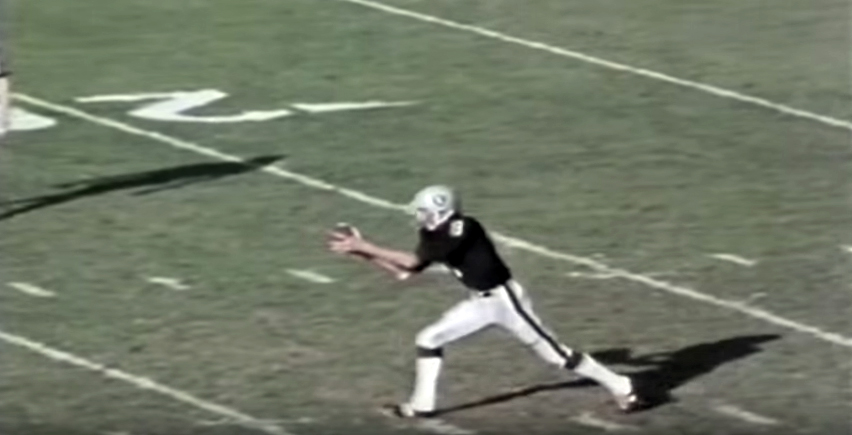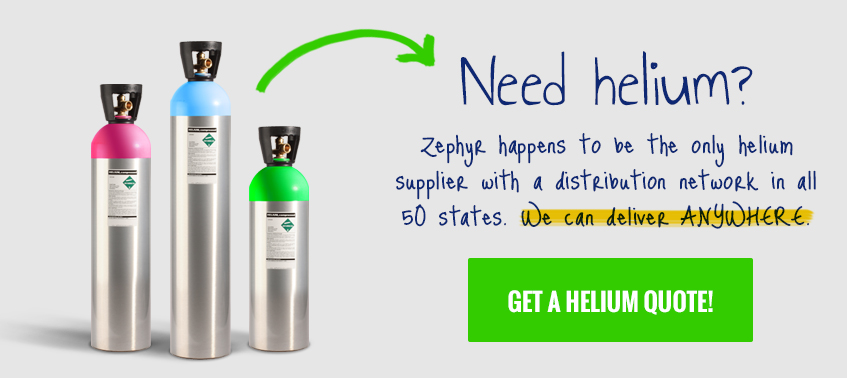Decades before “Deflategate,” an NFL controversy arose after claims that a punter was using helium-filled balls to get more hang time. But- would that work?
A helium-filled controversy
On November 13, 1977, Oakland Raiders punter Ray Guy was hanging kicks in the air for so long that the opposing Houston Oilers began to suspect that Guy had filled the kicking balls with helium. The suspicion turned to accusation, and then an investigation.
Since no one had thought of such a thing before, the NFL had no rules dictating what gas had to fill the football. Incredibly, there are still no rules addressing helium-filled footballs (or any gas, for that matter).
Before the game ended, the Oilers punt returner snuck one of the footballs over to the sideline, which the Oilers later sent to Rice University for testing.
Helium-filled vs. air-filled, 1977
A day after the game, radio station KMPC host Robert Morgan decided to do an informal test of his own. He enlisted sportscaster Al Wisk to kick a helium-filled football and an air-filled football down Sunset Boulevard, which Morgan convinced police to shut down so that he could broadcast the punts.
They determined that each kick of the helium-filled football traveled an average of 7 yards further than the regular air-filled football. They did not attempt to test for hang time.
Rice University test results
It would turn out there was no helium inside the Ray Guy football that was sent to the lab – he was just that good of a kicker. But… what if there had been?
The radio station’s test was nowhere near scientific and it all started out as a gag for promotion, but they were the very first to ever attempt to compare the flight distance of helium-filled footballs to air-filled.
It wouldn’t be until 1993 that anyone would think to do this again, and do it using scientific method.
Helium-filled vs. air-filled, 1993
Sports Illustrated conducted an experiment through Auburn University in 1993, enlisting the aid of the team’s punter, Terry Daniel and school physicist, Stephen Knowlton.
The hypothesis was that the helium-filled football would travel farther and have a longer hang time than one filled with air because helium is less dense than air. You can read all of the details of the test here.
The Auburn test showed that the helium-filled balls did not travel as far, nor did they hang in the air as long as the air-filled balls. Why? Filled equally to 13 PSI, the helium-filled balls were 2% lighter than the air-filled balls, and therefore met more wind resistance that impacted the speed and trajectory of the punt.
Helium-filled vs. air-filled, 2005
Jamie Hyneman and Adam Savage, hosts of MythBusters, decided to do a test of their own during the third season of the popular show. In their version of the test, they tested helium-filled and air-filled footballs for distance, but did not measure hang time.
Like the Auburn researchers, they also found that a helium-filled football weighs a few grams less than an air-filled ball when inflated to equal PSI. The MythBusters suspected that the helium-filled balls would travel further because they were lighter, but Newton’s laws of motion proved otherwise.
The heavier, air-filled ball travels through the air with greater force than the lighter, helium-filled football. So because more outside resistance pushes against the helium-filled football, the helium-filled ball does not travel as far as the heavier air-filled football.
And there you have it! Helium-filled footballs will not travel further or hang in the air longer than the heavier air-filled footballs.
Sources: Eugene Register-Guard, The Miami News, Sports Illustrated, discovery.com



